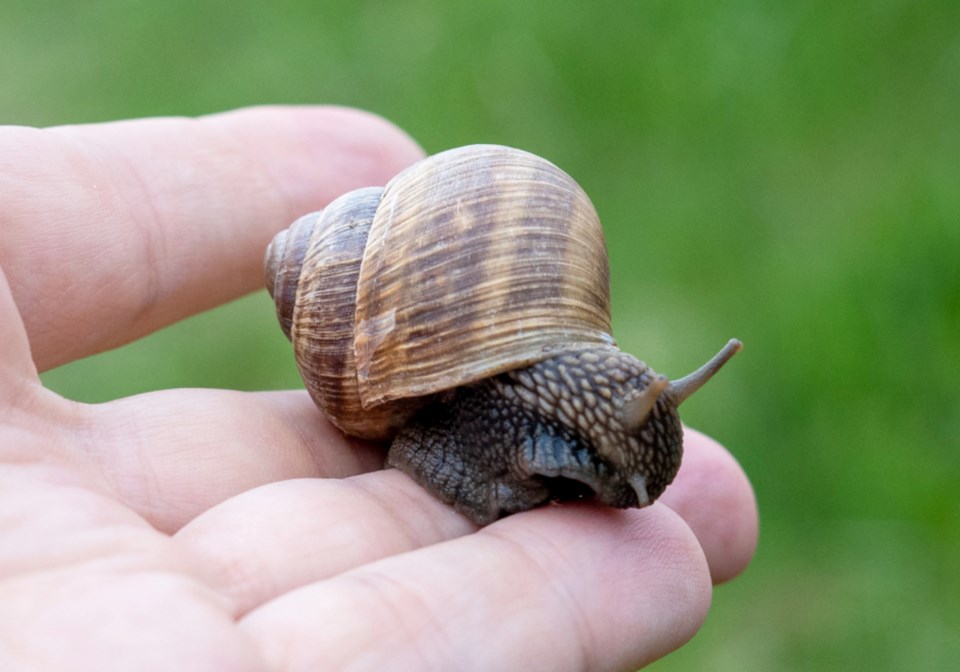Troy Shantz
They’re big. They’re slow. And broiled in a little garlic and butter, they’re known as escargot.
A colony of exotic air-breathing land snails has been sliding around Canatara Park largely unnoticed for at least the past eight years.
Canatara is one of only four places the Roman snail is known to exist in Canada, and no one knows how they got there.
“It’s a very different animal,” said James Kamstra, an ecologist from Toronto who first noticed the snails in 2013 while enhancing garter snake habitat in the wooded area known as Tarzanland.
Initially, he assumed they were big grove snails, commonly found in gardens and vacant lots. But he confirmed the rare find in a 2019 article co-authored with Robert G. Forsyth in Canadian Field Naturalist.
“It certainly brings up the question, ‘How did it get there?’” Kamstra said. “It really doesn’t look like they got there by accident.”
The snail gets its name from the ancient Romans, who are believed to have introduced them to Europe from Asia or North Africa for their food value. They are the popular with snail farmers (yes, that’s a thing), as well as hobbyists and gourmet chefs, who turn them into the French delicacy known as escargot.
Until Sarnia’s came to light, a colony in B.C. was the sole example of wild Helix pomatia known anywhere in Canada.
Since then, other colonies have been documented near Toronto and Halifax, Kamstra said.
The snails may have been brought to Canada for food or for the pet trade, although importing any species of Helix into Canada is prohibited, Kamstra said.
The Canatara snails are found near the woods and large hill marking a former landfill site. The colony appears to be stable, with as many as 15 to 20 counted per 9x9 metre space.
Kamstra is not certain whether they pose a threat to the local ecosystem. But they don’t appear to be spreading far and Roman Snails produce only about 50 eggs a year, he said.
“When I find something new I’m always leery that it’ll become the next problem. As impressive as they are, we don’t want to see these things, even though they seem like they’re harmless.”
The snails eat fruit, leaves, flowers, tree sap and other plant elements. They feed mostly at night but can be spotted on park paths in the early morning hours and on rainy days.
Grove snails, another an introduced species, are flourishing across Southern Ontario, Kamstra noted.
“That shows you a snail that doesn’t move much really can spread widely.”
